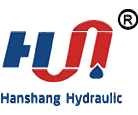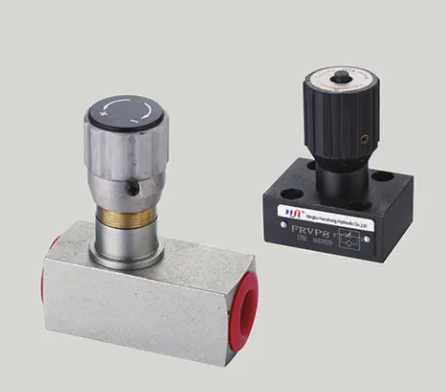Current Market Landscape of Industrial Hydraulic Valves
Key Sectors Driving Demand
Oil and Gas Industry
The oil and gas industry remains a dominant force in driving the demand for industrial hydraulic valves. These valves are integral to controlling the flow of fluids in drilling and extraction processes. The industry’s reliance on hydraulic systems for high-pressure applications underscores the importance of precision and reliability. As exploration activities expand, the need for advanced hydraulic solutions grows, ensuring operational efficiency and safety.
Automotive Sector
In the automotive sector, industrial hydraulic valves play a crucial role in manufacturing and assembly lines. They facilitate automation, enhancing production speed and accuracy. The shift towards electric vehicles further amplifies the demand for hydraulic systems that support battery manufacturing and assembly processes. As automotive technologies evolve, the integration of smart hydraulic valves becomes essential for maintaining competitive advantage.
Agriculture and Farming
Agriculture and farming sectors increasingly adopt hydraulic technology to improve productivity and sustainability. Hydraulic valves enable precise control of machinery, such as tractors and harvesters, optimizing resource use and reducing environmental impact. The trend towards smart farming practices drives the adoption of IoT-enabled hydraulic systems, allowing farmers to monitor and manage equipment remotely.
Technological Innovations
Smart Valves and IoT Integration
Technological advancements have led to the development of smart hydraulic valves, which integrate sensors and IoT capabilities. These valves offer continuous condition monitoring, enabling predictive maintenance and reducing downtime. Industries such as construction, agriculture, and renewable energy show strong interest in these innovations due to their reliability and versatility. The integration of smart valves into existing systems enhances operational efficiency and provides valuable data insights.
Energy Efficiency and Sustainability
Energy efficiency and sustainability have become pivotal in the design and application of industrial hydraulic valves. Manufacturers focus on developing valves that minimize energy consumption while maximizing performance. High-performance hydraulic valves, known for their precision and durability, contribute to sustainable operations by reducing waste and emissions. The emphasis on green technologies aligns with global environmental goals, driving the adoption of energy-efficient hydraulic solutions across various sectors.
Regional Trends in Industrial Hydraulic Valve Markets
Asia-Pacific
Industrialization and Urbanization
Asia-Pacific stands as a powerhouse in the industrial hydraulic valve market, driven by rapid industrialization and urbanization. Countries like China and India are experiencing significant infrastructure development, which fuels the demand for hydraulic valves. The region’s burgeoning industrial sector requires efficient fluid control systems, making hydraulic valves indispensable. The automotive and industrial sectors primarily drive the demand for mobile hydraulic valves, reflecting the region’s dynamic economic growth.
Government Initiatives and Investments
Governments in the Asia-Pacific region actively invest in infrastructure projects and industrial growth, further boosting the hydraulic valve market. Initiatives aimed at enhancing manufacturing capabilities and technological advancements create a favorable environment for market expansion. These investments not only support local industries but also attract foreign investments, contributing to the region’s economic prosperity.
Europe
Focus on Green Technologies
Europe places a strong emphasis on green technologies, influencing the industrial hydraulic valve market. The region’s commitment to sustainability drives the development of energy-efficient hydraulic solutions. Manufacturers focus on creating valves that reduce energy consumption and emissions, aligning with Europe’s stringent environmental regulations. This focus on sustainability enhances the market’s appeal to environmentally conscious industries.
Automotive Industry Developments
The European automotive industry plays a pivotal role in shaping the hydraulic valve market. As the industry transitions towards electric vehicles, the demand for advanced hydraulic systems increases. Hydraulic integrated valves become essential components in manufacturing processes, ensuring precision and efficiency. Europe’s robust automotive sector continues to innovate, driving the adoption of cutting-edge hydraulic technologies.
North America
Technological Advancements
North America remains at the forefront of technological advancements in the industrial hydraulic valve market. The region’s advanced industrial base supports the development and integration of smart hydraulic systems. Automated hydraulic valves gain popularity due to their effectiveness and stability, meeting the demands of various industries. The focus on innovation positions North America as a leader in hydraulic technology.
Oil and Gas Exploration
The oil and gas sector significantly influences the hydraulic valve market in North America. The region’s exploration activities require reliable and precise fluid control systems, making hydraulic valves crucial. As the industry expands, the demand for high-quality hydraulic solutions grows, ensuring operational efficiency and safety. North America’s strong presence in the oil and gas industry underscores its importance in the global hydraulic valve market.
Factors Driving Demand Across Regions
Industrialization and Economic Growth
Industrialization continues to be a major driver of demand for industrial hydraulic valves. As countries develop their industrial sectors, the need for efficient fluid control systems becomes paramount. Industries such as manufacturing, construction, and mining rely heavily on hydraulic valves to ensure smooth operations. The expansion of these sectors contributes significantly to the growth of the hydraulic valve market. Economic growth in emerging markets further accelerates this demand, as businesses invest in advanced technologies to enhance productivity and competitiveness.
Technological Advancements and Innovations
Technological advancements play a crucial role in shaping the industrial hydraulic valve market. Innovations in valve design and materials have led to the development of more efficient and reliable products. Smart valves, which integrate sensors and IoT capabilities, offer enhanced diagnostics and remote monitoring. These features enable predictive maintenance, reducing downtime and operational costs. The adoption of such advanced technologies is widespread across industries, driving the demand for modern hydraulic solutions. Additionally, improvements in hydraulic solenoid valves, including better designs and production techniques, contribute to market growth.
Environmental Regulations and Sustainability Goals
Environmental regulations and sustainability goals significantly influence the demand for industrial hydraulic valves. Industries are increasingly adopting energy-efficient solutions to comply with stringent environmental standards. Hydraulic valves designed for energy efficiency help reduce emissions and minimize waste, aligning with global sustainability objectives. The focus on green technologies encourages the development of valves that support sustainable operations. As a result, industries prioritize the adoption of hydraulic solutions that not only enhance performance but also contribute to environmental conservation.
The industrial hydraulic valve market is evolving rapidly, driven by technological innovations and increasing demand across key sectors. These trends promise significant implications for industry stakeholders, including enhanced operational efficiency and sustainability. Companies must stay informed about market developments to maintain a competitive edge. Continuous innovation in valve design and manufacturing will be crucial for meeting future demands. As industries prioritize precision and reliability, the market’s growth trajectory remains promising, offering opportunities for those who adapt to these emerging trends.






